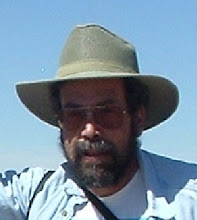
In light of the unfortunate death Wednesday of former NM Supreme Court Justice Gene Franchini, I'm including the report of his talk to NMSR in December of 2003, on the intersection of Science and the Law.
Gene was thoughtful, articulate, a patriarch, and a good friend. He will be sorely missed.
Dave Thomas
DEC. 10th, 2003 NMSR MEETING Science and the Law
On Dec. 10th, New Mexicans for Science & Reason heard Gene Franchini (Former Chief Justice of the Supreme Court of New Mexico), on "Science and the Law." Gene started by talking a bit about a similar speech he’d given at UNM nearly forty years earlier, titled “Sex and the Law,” and related some humorous anecdotes about that trying experience. Gene then talked about polygraphs, in view of NMSR’s Dave Thomas question “Why is New Mexico the only state in the Union that still allows Polygraphs in open court?”. There’s good news and bad, Gene explained. Thirty years ago, in a case called State vs. Dorsey, lawyers for the defense had their client take a polygraph, and the polygrapher deemed him “innocent.” The court admitted it, for what it was worth. Then, in an Interlocutory Appeal, the Court of Appeals ruled that polygraphs in New Mexico can be allowed, provided they are given by a “qualified” examiner, and provided that the District Attorney can do an independent polygraph exam. It did not go to the state’s Supreme Court, even though the subject was as emotional and controversial then as now.
Then, the Legislature got into the act with new laws about polygrapher qualifications, which included being age 18, having a high school diploma, and passing an exam. Gene doesn’t know if any polygraphers have ever taken the “exam.” That’s because, since Dorsey, only two cases have seen polygraphs used, and both of these were grand jury proceedings, not trials. The law hasn’t been repealed mainly because there have not been any cases going to appeal. The good news, Gene said, is that the state legislature back then added a self-repealing provision to the law. New Mexico’s Polygraph Law will self-destruct on July 1, 2006, unless new legislation is enacted.
Gene then discussed his views on science and the law in general. In the introduction, I had pointed out one difference of science and the law. As opposed to the detailed examinations of science, jurors are supposed to take a “big picture” approach, and are not allowed to even examine transcripts of trial testimony, as this might promote too much emphasis on too few details. There’s hope, Gene said - science and the law are “closer than you think.” This is mainly due to the explosion of technological advances like DNA fingerprinting. The old pre-eminence of eyewitness testimony is losing ground to scientific evidence. But, with new tools come new potentials for abuse - is an X-ray of the contents of a sealed truck, for example, an “unreasonable search and seizure?” (In practice, X-rays might be used to establish probable cause before getting a warrant.)
But if Science and the Law are getting along better now, it certainly wasn’t like that in the past. The aim of the Law is attainment of Justice, but there is no simple formula for obtaining it. That’s why you “practice” the law - because you can never get it right, he joked. Gene talked about how James Madison appointed Thomas Jefferson’s friend, John Marshall, to the Supreme Court, and how Marshall’s now-accepted view that the Supreme Court is the final arbiter of the Constitution (a power never mentioned in the Constitution itself) scandalized Jefferson. Indeed, Jefferson never spoke to Marshall again. One of the eccentricities of our system of justice is its incredible inertia. “Nothing is quite as slow as the Law,” Gene said. In much of Europe, Code (or Civil) Law is practiced; there, the Law is based on broad principles, and the details are not all that important. Decisions are often rendered by law professors from the universities. In England and America, however, the Common Law system has evolved along a quite different path. In Common Law, it is the details - individual cases decided by judges - that establish Case Law for all. Gene likened it to a big pile of dung - you try to find a patch that’s not too smelly, and use that for piling on.
The Latin term used for “standing by that which is decided” is Stare Decisis - when courts follow precedent decisions. Really bad decisions can themselves be repealed, but the system has a huge amount of inertia, and changes but slowly. Stare Decisis is like the Killyloo Bird, Gene said - because it flies backwards, it knows where it’s been.
Gene then discussed ways to deal with bogus science in the courtroom. Sometimes judges can rule on whether certain evidence is even admissible. By and large, however, the jury has the responsibility of assigning weight and credibility to witnesses and evidence. Overall, they get it right, Gene said, but there certainly are exceptions.
Gene ended his talk on a cautionary note, advising listeners to keep an eye on nominees to the Supreme Court. There’s a difference between “innocent” and “not guilty,” and this difference is being questioned by some Court hopefuls such as Texas legislator Priscilla Owens, who argues that the burden of proof belongs to defendants, not the state.
NMSR thanks Gene Franchini for a delightful presentation.


No comments:
Post a Comment